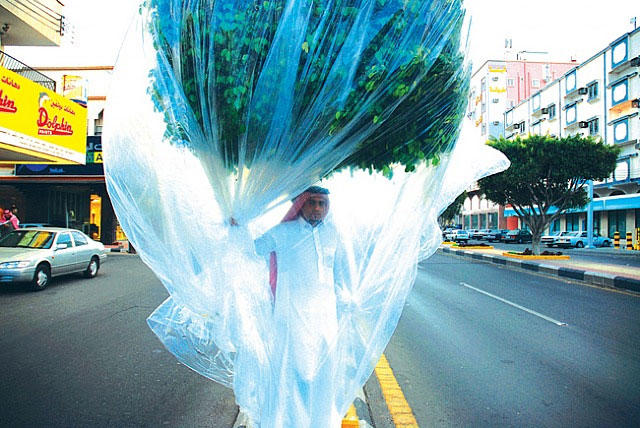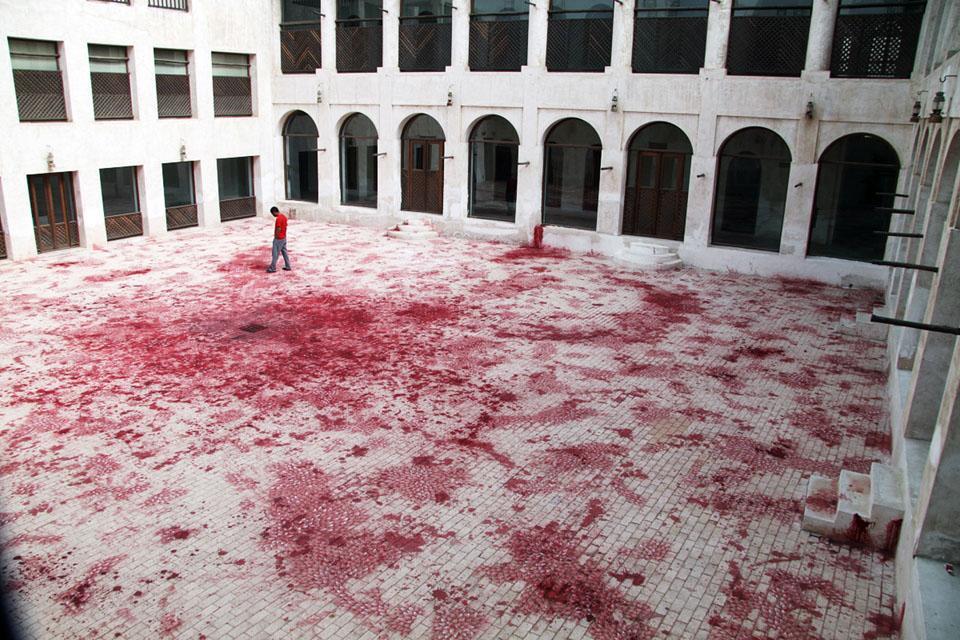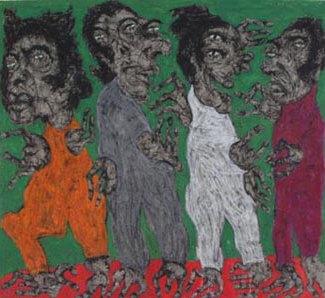Introduction
Artists generate arts, which are products of creative works that depict a given phenomena in society. Artists usually derive their creative works from their environment because arts depict or predict certain activities that people perform. A critical examination of the arts provides important information about a certain society in terms of their social, economic, political, and cultural backgrounds. Across the world, arts vary from one country to another due to differences in political, social, cultural, and economic environments of artists. Since artists derive their artistic works from their varied environments, they provide diverse artistic works according to their respective environments. For example, artists from the Middle East share common artistic expressions as they have the same political, cultural, religious, social, and economic conditions. Hence, this essay examines three artists from the Middle East, Abdulnasser Gharem, Imran Qureshi, and Sabhan Adam, in terms of their socio-political surroundings and the nature of the arts they produce.
Abdulnasser Gharem
Abdulnasser Gharem is a Saudi Arabian artist who has contributed to the development of arts in the Middle East. Since Saudi Arabia has been grappling with political, economic, and social issues, it has affected its status in development when compared with other Arab countries. Politics of Saudi Arabia centers on the monarchy, where the king performs executive, legislative, and judicial functions based on Islamic laws. The King also issues royal decrees that comprise important legislations of the country.
Moreover, the royal family that plays an important role in the government for its members dominate the political realm. Additionally, the economy of Saudi Arabia has been growing amidst numerous challenges. Prior to the discovery of oil reserves in 1941, Saudi Arabia was among the poorest countries in the world because its economic growth depended on pilgrimage revenues and agriculture. However, proceeds from the oil industry have enabled Saudi Arabia to build its economy and gain political power internationally.
In performance art, Abdulnasser Gharem is demonstrating how native trees are important to society. Grundey asserts that “he wrapped himself and a tree in plastic, implying he was surviving on the oxygen produced by the tree” (par. 2). This performance art was unique in the city; thus, many people managed to get the message he intended to get across regarding environmental conservation. Additionally, in his artistic expressions, Abdulnasser Gharem is protesting about the nature of society that political and religious leaders have created.
Abdulnasser Gharem argues Saudi Arabians are unable to gain the necessary information, for no one is educating them. Abdulnasser Gharem says that “in this region, they develop these big buildings, these big cities, but they do not develop the people or the environment” (Grundey par. 9). Hence, in his arts, Abdulnasser Gharem is trying to enlighten the society to develop political, social, and physical aspects of humanity rather than concentrating on economic development only.

Imran Qureshi
Imran Qureshi is an artist from Pakistan who has managed to gain international recognition as Deutsche Bank selected him as the best artist of the year 2013. Pakistan is a democratic country that is grappling with the issue of Islamization of social and political aspects of society. The Islamization made Pakistan conflicts with its neighboring countries like India and the international community. Since the economy is growing well, Pakistan has managed to utilize its resources in procuring military weapons and producing nuclear weapons. The Kashmir conflict and generation of nuclear weapons portrays Pakistan as a military state that is ready to fight with any nation that threatens its sovereignty.
As an artist, Imran Qureshi is trying to depict a society that is full of fights by using red color in his paintings. When people fight, they spill their blood on surfaces and cause shambolic appearance of the environment. In his paintings, Imran Qureshi finds “an iconic image that characterizes our turbulent times as a situation fraught with violence and at the same time full of hope” (Vogel par. 1). Paintings that have different colors fused with the color of blood give an impression of a violent society.
Moreover, desolate rooms that have blood splashed on the floor and walls are major works of Imran Qureshi. Many people describe the paintings of Imran Qureshi as against Islamic traditions because they portray a violent society that is inhabitable. When asked about the nature of his paintings, Imran Qureshi answered that “I always enjoy going against the traditional process of making a miniature painting and breaking its boundaries” (Vogel par. 14). From his paintings, one can infer that Imran Qureshi is not only a creative artist but also a daring one.

Sabhan Adam
Sabhan Adam is one of the prominent artists in Syria who has managed to attract international attention due to his arts. Syria is a country in the Middle East that has continually encountered political upheavals and war since its independence. The political system is undemocratic because Islamic law and authoritarian rule are still dominant. Economically, oil and agricultural sectors provide the main sources of revenue that have strengthened the economic independence of Syria in the Middle East. Baker asserts that recent political uprising in Syria attracted international attention and artists as well since they are trying to portray the impact of the current regime on the country (par. 2). Thus, artists are generating diverse works of art in a bid to depict a political situation that is in Syria.
Sabhan Adam is a neutral artist because he has no bias in his arts. While the media wants him to portray certain interests, the powerful people also want him to present their interests. However, Sabhan Adam has managed to take his stand as a neutral artist. Given that Syria is prone to violence, war, and revolutions, Sabhan Adam artistically predicted the occurrence of such events in the past decades. Baker argues that “indeed, his tortured imagery, full of contorted bodies, severed limbs, misplaced eyes, and bright red gas masks are echoes of the current grisly conflict” (par. 9). The violence that has disturbed Syria’s economic and political stability has contributed to the loss of lives and injuries, which distorted not only the lives of people but also their physical appearance as depicted by Sabhan Adam’s arts.

Conclusion
Arts are powerful media that artists use in expressing their perceptions about issues that are in society. As artistic expressions vary from one country to another, they depend on social, economic, political, or religious backgrounds under which artists perceive the society. Abdulnasser Gharem used his artistic skills to portray issues that Saudi Arabians are facing, while Imran Qureshi employed his artistic skills in depicting the society of Pakistan. Additionally, Sabhan Adam, in his arts, depicts the distorted lives of Syrians due to constant violence. Therefore, artists have powerful and unique ways of expressing their perceptions in a given society.
Works Cited
Baker, Aryn. The art of war: Syria’s artists find pain and fame on the front lines. 2013. Web.
Grundey, Adam. Abdulnasser Gharem and the art of war. 2011. Web.
Vogel, Sabine. Political patterns: Changing ornament. 2011. Web.